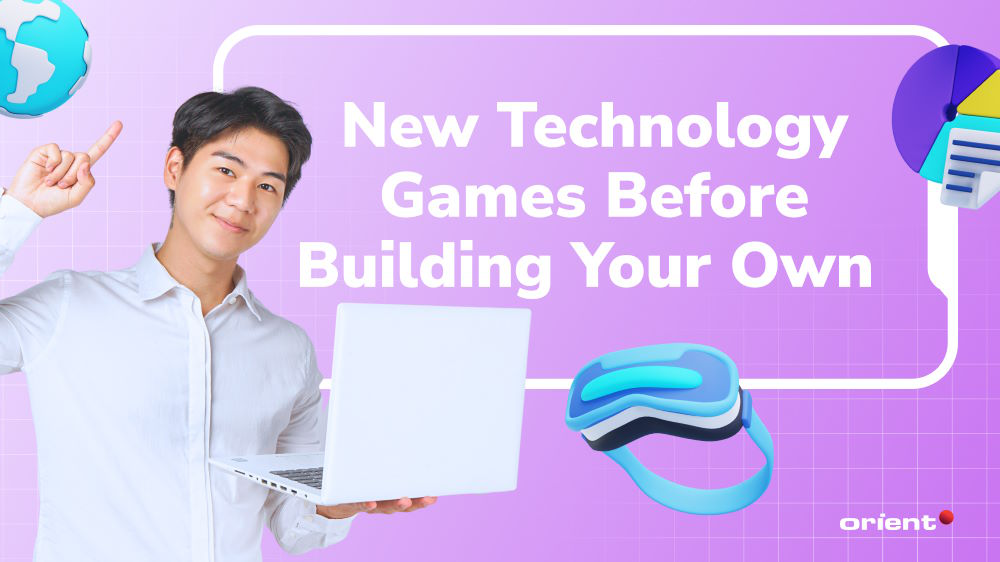New technology games are the latest craze in the gaming industry that has changed the way we used to play games. Game developers are the masterminds behind crafting immersive and interactive experiences for players, utilizing cutting-edge technologies and innovations in the process. Some examples of new technology games are virtual reality (VR), augmented reality (AR), cloud gaming, and artificial intelligence (AI) games. These games offer new ways of playing and learning that are different from traditional games.

This article provides an overview of cutting-edge gaming technology trends that are transforming the industry and insights into successfully leveraging them. We’ll explore technical considerations, design approaches, potential hurdles, and best practices to keep in mind for innovative projects. Our goal is to help indie studios and smaller teams leverage the groundwork laid by innovators while avoiding common pitfalls through informed planning.
The Features of New Technology Games
The new technology features of the gaming world are the technical and creative aspects that make them different from traditional games. New technology games use advanced hardware, software, and platforms to create immersive and interactive experiences for players. Here are some of the features of new technology games that you should know.
Virtual Reality (VR)
Virtual reality games are ones specifically designed to be played within a virtual reality headset, like the Oculus Quest or Valve Index. They fully immerse players in simulated 3D worlds through stereoscopic graphics rendered in real time.
A key feature of VR games is the ability to translate player movements and actions directly into the virtual world. This is made possible through motion tracking of the headset and installed sensors that follow the player’s head, hand positions, and body movements. VR controllers with haptic feedback also help mimic realistic interactions.
Common VR game genres include first-person shooters, adventure games, flight/space simulators, and puzzle games. Popular titles take advantage of VR’s immersive properties by transporting players to new environments and giving them interactive superpowers. Examples include Beat Saber (rhythm sword slashing), Superhot VR (time manipulation), and Half-Life: Alyx (story-driven FPS).
Augmented Reality (AR).
Augmented reality (AR) games enhance the real world with computer-generated perceptual information, typically using a mobile device’s camera. In contrast to virtual reality, AR allows players to maintain awareness of their physical surroundings.
Pioneering AR games utilize marker tracking to identify patterns in the real environment. Players then interact virtually with digital objects registered to those markers. More recent AR technology leverages visual SLAM (simultaneous localization and mapping) to anchor objects without the need for markers.
Leading AR includes mobile games of popular franchises like Pokémon Go and Jurassic World Alive. They leverage GPS to locate virtual creatures and creatures in real-world locales. Other innovative AR titles include games that turn the player’s house into a virtual maze or battlefield.
Cloud Gaming
Cloud gaming services allow users to play console- and PC-quality games without requiring high-end hardware by streaming gameplay from remote data centers. While playing games, they run and render entirely in the cloud, with only inputs and video/audio being transmitted to any supported device. It has the ability to bring up an entirely new realm of online games and experiences.
As 5G networks advance, latency is improving to provide smooth responsiveness even for mobile gaming. This opens the door for a true on-the-go portable cloud gaming market without a dedicated device. New services like Xbox Cloud Gaming (xCloud) and NVIDIA GeForce Now have since expanded the market.
The benefits of cloud-based gaming include giving inexpensive devices like Chromebooks or phones access to unrestricted libraries. Users also always have the latest game versions, avoiding hefty downloads. Cross-platform play lets gamers freely shift sessions between screens at home or on the go.
Artificial Intelligence (AI)
AI games utilize artificial intelligence to power sophisticated, adaptive behaviors within game environments. From opponents to companions, AI is used to create interactive games and engaging experiences for players. The advances in processing power and machine learning capabilities of modern gaming consoles have enabled the development of more complex AI behaviors and adaptive systems within games.
Classic AI applications include tactical opponents in strategy and puzzle games that assess conditions to deliver challenging yet fair play. Modern machine learning allows for versatile and unpredictable robotic foes/allies in FPS, RPG, and other genres.
Embodied AI brings characters to life with autonomous movement, speech, problem-solving, and emotional responses. Titles like Cyberpunk 2077 feature believable NPCs that chat, gesture, and survive based on their personalized routines.
Conclusion
In summary, established technologies will keep maturing, but predicting emerging ones is challenging. Developers are not obligated to use any particular tech either. Creating indie titles that prioritize enjoyable mechanics and novel concepts ensures relevance across shifting industry innovations. At its core, gaming is about enjoyment, which Orient Software stands ready to help developers cultivate.























+ There are no comments
Add yours